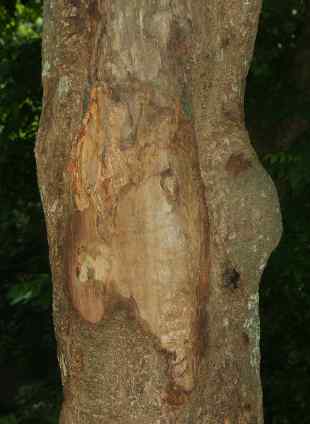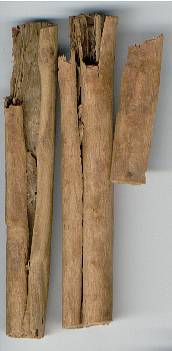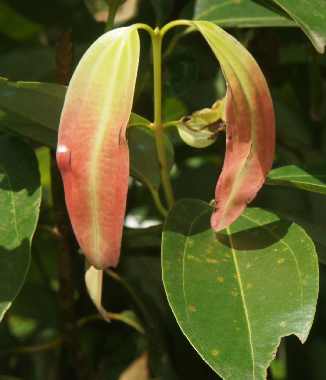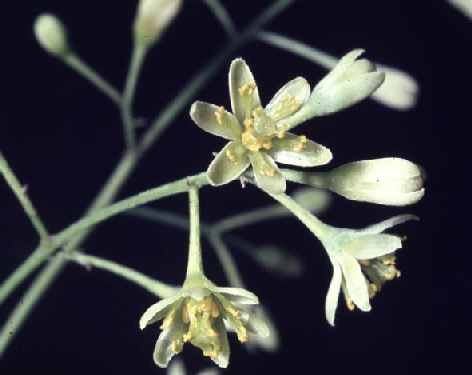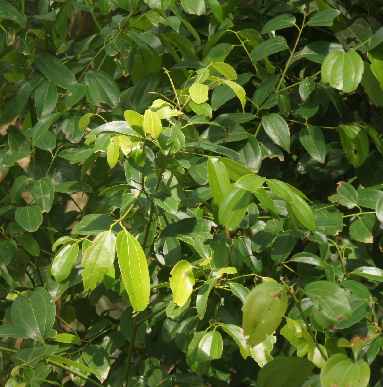
|
| Branches of cinnamon trees in Sri Lanka |
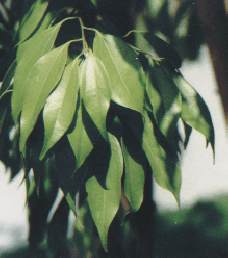
|
| Branch of cinnamon tree |
See Indonesian cinnamon for a comparison of different cinnamon species. See also cassia for usage of cinnamon in Chinese cuisine and Vietnamese cinnamon for cinnamon usage in Vietnam.
Since Ceylon cinnamon is native in South Asia, it is not surprising that the cuisines of Sri Lanka and India make heavy use of it. It is equally suited for the fiery beef curries of Sri Lanka and the subtle, fragrant rice dishes (biriyani) of the Imperial North Indian cuisine. It is also widely in use for flavouring tea. Cinnamon is also popular in all regions where Persian or Arab influence is felt: West, South West and Central Asia, Northern and Eastern Africa.
Although cinnamon was very popular in Europe in the 16.th to 18.th centuries, is importance is now rather shrunken: the main application for cinnamon in Western cooking are several kinds of desserts; stewed fruits, for instance, are usually flavoured with a mixture of cloves and cinnamon. Cinnamon is, however, only rarely tried for spicy dishes.
In India, cinnamon is applied as a whole; the bark pieces are fried in hot oil
until they unroll (this is important to release the fragrance); then,
temperature is quenched by adding other components, like tomatoes, onions or
yoghurt (see onions and black cumin for further details). The cinnamon chunks
may be removed before serving, but are more frequently kept as a fragrant
decoration.

|
| Cinnamon fruits |
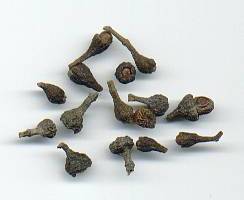
|
| Cinnamon buds (dried cinnamon fruits) |
In most other countries, powdered cinnamon is preferred. The powder should be added shortly before serving, as it becomes slightly bitter after some time of cooking. Powdered cinnamon is contained in several spice mixtures, like North Indian garam masala (see cumin), curry powder (see curry leaves) and Arabic baharat (see paprika). African spice mixtures in Arabic style are Moroccan ras el hanout (see cubeb pepper), Tunisian gâlat dagga (see grains of paradise) and berbere, an Ethiopian spice mixture with somewhat Indian character (see long pepper). Cinnamon bark is, furthermore, an optional ingredient for the classical French mixture quatre épices (see nutmeg). For Chinese five spice powder, see cassia. Cinnamon has become popular in México; see paprika for its usage for the famous mole sauces.
The so-called cinnamon buds
are the unripe fruits harvested shortly after the
blossom; in appearance, they are similar to cloves.
These buds are less aromatic than the bark; their odour is, however, rather
interesting: mild, pure and sweet. To release their fragrance, they must be
finely ground. Their usage as a spice has only regional importance in China
(there obtained from the cassia tree) and India
(region Kutch in the union state Gujarat). I cannot explain why, but spice
vendors tend to confuse cinnamon buds with cubeb
pepper berries, which look and taste totally different.
Cinnamon and its relatives are Asian plants and have, to my knowledge, not much
been transferred to New World countries. In Northern South America, however, there are
plants referred to as American
or Native Cinnamon
; the most common
is Ocotea quixos from Ecuador
and Perú; the bark of that tree has a flavour very close to cinnamon.
